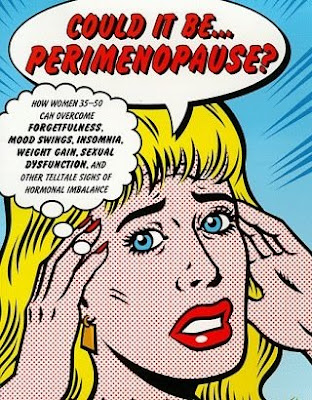(Posted for Dr. Greenfield, by Jennifer Campbell, Wellness Coordinator)
What is a Health & Wellness House Party?
A Health and Wellness House Party is a Gathering of Friends, Family, Co-workers, Organizations, etc… in your own home for the purpose of learning TOGETHER about Health and Wellness Options. Dr. Greenfield will come to your place of residence (or other chosen location) and have a learning session with discussion and Q&A on any of the topics listed in this brochure. She can also work with you to formulate a topic of discussion and a presentation to go along with that desired topic. As for the party…that is up to you! We can give you healthy recipes for traditional meals made with whole foods, or you can simply decide a menu for yourself. We could also work with some of our own contacts to possibly provide snacks for your guests. Food is not required, but it always makes a gathering more personal and comfortable!The Best time for a house party is during the week after 6:30pm or on the weekends.
What are Some of the Topics She Can Speak On?
- Perfect Bones. A 6 point Plan for Healthy Bones
- Nourishing Our Children: improve your child’s health and well being through simple and effective nutritional guidelines. Based on research and information from the highly reputable and respected Weston A. Price Foundation, this lecture is essential for anyone interested in giving their children a chance at optimal health, happiness, and quality of life.
- Detoxification for Weight Loss and Wellness
- Trans Fats 101: How to find them and why you should stay away from them
- Top Ten Things: 10 things You can do for your health
- Natural Stress Management Tactics
- Menopause: a Holistic Approach to the roller coaster ride of menopause
- Understanding Hormones: How Balancing hormones can treat illness, prevent disease, and create overall balance.
- ABCs of Autism: Allergies, Behavior & Chemicals address biomedical needs of autistic children & adults as well as diet and detox therapies to treat autism
- Nutrition for Women: 10 Foods Women Should Be Eating More Often. This thought-provoking seminar will examine the nutritional health of women and discuss dietary strategies for optimal health
- Healthy on a Budget: 5-10 tips to staying healthy on a budget
Beating the Fall time Change: Natural Treatments for Seasonal Affective Disorder and the Winter Blues. - Fight Cold & Flu Naturally
- Preventing Breast Cancer with PROPER Nutrition
- Have you had your Omega-3 today? Why and How much fats are necessary
- Beating Depression the All Natural Way
- Are Bioidentical Hormones Right For You?
How Do I Set Up a House Party?
To Schedule a House Party please email ccwwellness@gmail.com to let Jennifer Campbell, our wellness coordinator, know that you are interested. If you are interested in any of these topics or if you have another topic in mind include this in the email.You Must be within 20 miles of our office to participate due to travel difficulties. This includes most of Wake Forest, Raleigh, Cary, parts of Apex and parts of Chapel Hill and Durham.Each Gathering will last about 2 hours and is sure to insight a passion for health and wellbeing in your group. Dr. Greenfield’s hope is that she can help each and every person she speaks to on their path to preventive health and overall balance.Dr. Greenfield does not charge for house parties. She simply hopes to increase public awareness of pressing health issues! Take advantage of this opportunity!
Who Is Dr. Jennifer Greenfield?
Dr. Jennifer Greenfield is managing partner of Center for Chiropractic & Wellness in Raleigh, NC. Graduating from Parker College of Chiropractic in 2005, she is now an established chiropractor, Applied Kinesiologist, Specializing in Restorative Endocrinology™. She offers in office and phone consultations for women and men of all ages looking to restore their health through Hormone Balancing.
Dr. Greenfield’s journey began at the age of 17 when unrelenting joint and muscle pain led her to seek chiropractic care. Since that time, she has believed in the power of the body to heal itself, which is a foundational premise behind chiropractic. Dr. Greenfield discovered a love of Applied Kinesiology and growing interest in nutrition while at Parker College of Chiropractic. From that time on, she applied herself and dove into learning the connection between the physical, biochemical, and emotional aspects of the body. This fascination and appreciation for the intricate synergy of the different components of the body evolved and grew when she first attended a lecture given by Janet Lang, D.C on Hormone Balancing in 2007. That lecture triggered a passion in Dr. Greenfield and she began to pursue training with Dr. Lang to become a Restorative Endocrinology Specialist.
Dr. Greenfield has structured her practice to highlight the intricate relationships of the body through physical alignment, nutrition, emotional balance and hormone balancing and has seen patients improve beyond their expectations. She incorporates many different therapies into her practice including Neuro-Emotional Technique, which clears emotional blockages in the system to allow for chemical and physical health as well as mental health. Her love of learning manifests itself in her constant search for more information through lectures, literature, research and more across the country. Her ultimate goal is the healing of the whole individual with knowledge, compassion, and understanding. In addition to treating patients, Dr. Greenfield is also a valued speaking personality in the local Raleigh area on many areas of health and wellness, and hopes to take that reputation to the national circuit.
Dr. Greenfield loves her work, but she also recognizes the importance of taking time to heal and restore her own body and mind. Some of her favorite activities are gardening, strolling the Raleigh Greenways, hiking in Umstead Park, traveling to Sedona to soak in the desert beauty, and trying out new recipes with traditional foods. She has lived in Raleigh since 2005 and truly appreciates the vibrant Triangle community where it is easy to find cultural events, intellectual stimulation and outdoor activities.
 mid 1990s Sally Fallon wrote Nourishing Traditions: The Cookbook that Challenges Politically Correct Nutrition and the Diet Dictocrats. This sizeable book is not only a cookbook but also reference manual for eating traditional foods and realizing optimal health, based on the work by Dr. Price. Traditional foods can be thought of the way our great, great grandparents ate before the industrialization of our food supply and the extensive use of chemicals and the refining of foods.
mid 1990s Sally Fallon wrote Nourishing Traditions: The Cookbook that Challenges Politically Correct Nutrition and the Diet Dictocrats. This sizeable book is not only a cookbook but also reference manual for eating traditional foods and realizing optimal health, based on the work by Dr. Price. Traditional foods can be thought of the way our great, great grandparents ate before the industrialization of our food supply and the extensive use of chemicals and the refining of foods.





